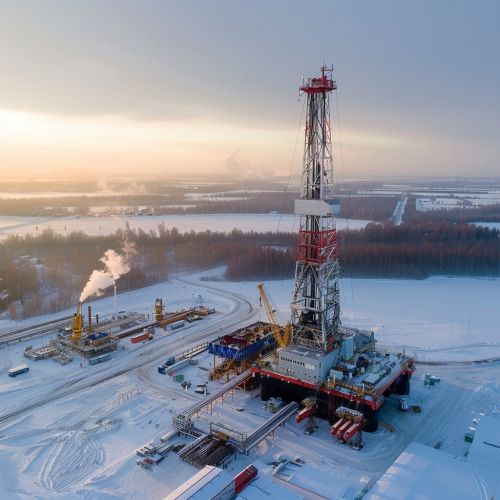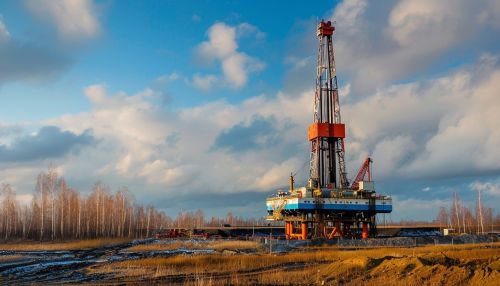Russian economy
Overview
The Russian economy is one of the largest and most complex in the world, characterized by its vast natural resources, significant industrial base, and a diverse range of economic activities. As a mixed economy, Russia combines elements of both market and planned economies, influenced by its Soviet legacy and subsequent transition to a market-oriented system. This article delves into the various facets of the Russian economy, including its historical development, key sectors, economic policies, and contemporary challenges.
Historical Development
Soviet Era
The foundation of the modern Russian economy was laid during the Soviet era, particularly under the leadership of Joseph Stalin. The Soviet Union implemented a centrally planned economy, characterized by state ownership of the means of production and centralized economic planning. The focus was on rapid industrialization and collectivization of agriculture, which led to significant economic growth but also caused widespread social and economic disruptions.
Post-Soviet Transition
The dissolution of the Soviet Union in 1991 marked the beginning of a tumultuous transition to a market economy. The early 1990s were characterized by economic liberalization, privatization of state-owned enterprises, and the establishment of a new legal and institutional framework. This period, often referred to as "shock therapy," resulted in significant economic contraction, hyperinflation, and a sharp decline in living standards for many Russians.
Key Economic Sectors
Energy
The energy sector is the cornerstone of the Russian economy, with oil and natural gas being the most significant contributors. Russia is one of the world's largest producers and exporters of both oil and natural gas. The state-owned company Gazprom dominates the natural gas sector, while Rosneft and Lukoil are major players in the oil industry. The energy sector not only generates substantial revenue but also plays a crucial role in Russia's geopolitical strategy.


Manufacturing
The manufacturing sector in Russia is diverse, encompassing industries such as aerospace, automotive, defense, and metallurgy. The aerospace industry, led by companies like United Aircraft Corporation, is renowned for producing military and civilian aircraft. The automotive industry, although smaller in scale, includes notable manufacturers like AvtoVAZ and GAZ Group. The defense industry is a significant part of the manufacturing sector, with Russia being one of the world's largest arms exporters.
Agriculture
Agriculture in Russia has undergone significant transformation since the Soviet era. The sector includes the production of grains, such as wheat and barley, as well as livestock farming. Russia is one of the world's leading wheat exporters, benefiting from its vast arable land and favorable climatic conditions. The agricultural sector has also seen increased investment and modernization in recent years.
Services
The services sector in Russia includes a wide range of activities, from banking and finance to tourism and retail. The banking sector is dominated by state-owned institutions like Sberbank and VTB Bank. Tourism has grown steadily, with Russia's rich cultural heritage and natural landscapes attracting millions of visitors annually. The retail sector has also expanded, with the rise of modern shopping malls and e-commerce platforms.
Economic Policies and Reforms
Fiscal Policy
Russia's fiscal policy has been characterized by efforts to maintain macroeconomic stability and manage public finances prudently. The government has implemented measures to control budget deficits and reduce public debt. The establishment of the National Wealth Fund and the Reserve Fund has provided a buffer against economic shocks and helped stabilize the economy during periods of volatility.
Monetary Policy
The Central Bank of Russia (CBR) plays a crucial role in shaping the country's monetary policy. The CBR's primary objectives include controlling inflation, ensuring financial stability, and maintaining the stability of the national currency, the Russian ruble. The bank has adopted a floating exchange rate regime and uses various monetary policy tools, such as interest rate adjustments and open market operations, to achieve its goals.
Structural Reforms
Structural reforms have been a key focus of Russian economic policy, aimed at improving the business environment, enhancing competitiveness, and fostering innovation. Reforms have included measures to reduce bureaucratic red tape, protect property rights, and combat corruption. Efforts have also been made to diversify the economy away from its heavy reliance on the energy sector by promoting sectors such as technology, agriculture, and manufacturing.
Contemporary Challenges
Economic Sanctions
Since 2014, Russia has faced a series of economic sanctions imposed by Western countries in response to its actions in Ukraine and other geopolitical issues. These sanctions have targeted key sectors of the Russian economy, including finance, energy, and defense. The sanctions have had a significant impact, leading to reduced foreign investment, restricted access to international financial markets, and technological constraints.
Demographic Issues
Russia faces significant demographic challenges, including a declining population, aging workforce, and low birth rates. These issues pose long-term risks to economic growth and labor market dynamics. The government has implemented various policies to address these challenges, such as promoting family-friendly policies, improving healthcare, and encouraging immigration.
Economic Diversification
Despite efforts to diversify the economy, Russia remains heavily dependent on its energy sector. This dependence makes the economy vulnerable to fluctuations in global oil and gas prices. Diversification efforts have focused on developing other sectors, such as technology, agriculture, and manufacturing, but progress has been slow and uneven.
